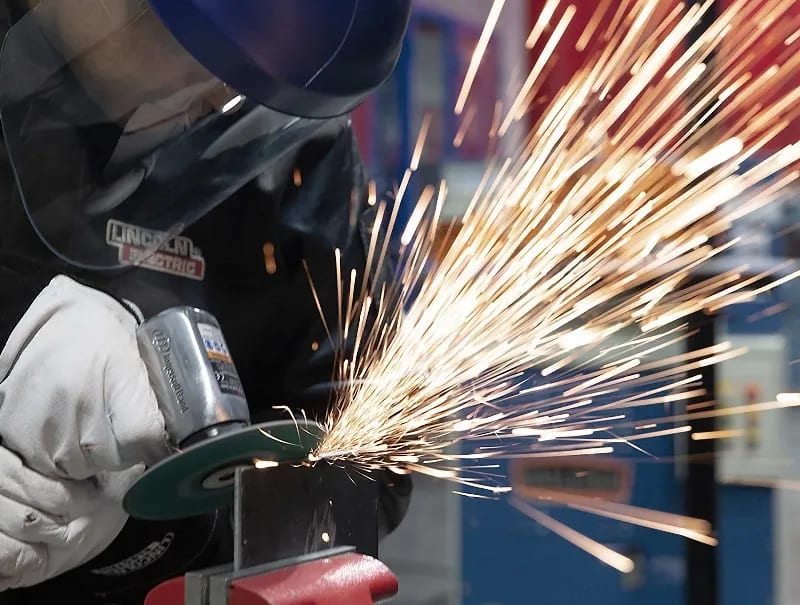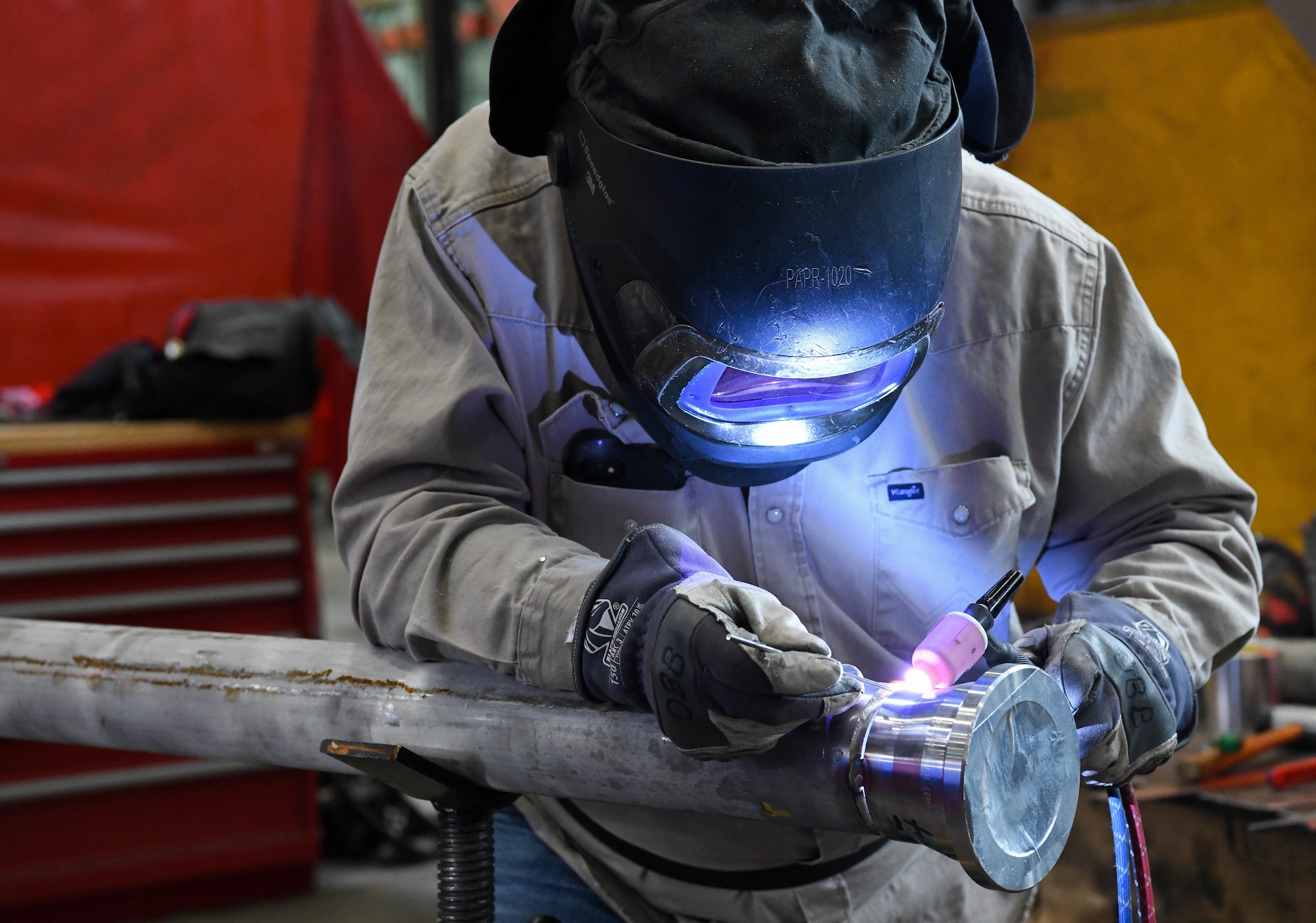Everything about Welding: Key Insights Into Techniques and Ideal Practices for Success
Welding includes a variety of techniques, each fit for particular materials and applications. Understanding these methods, such as GMAW, SMAW, and TIG, is essential for attaining ideal outcomes. Furthermore, the best tools and safety techniques can not be neglected. As preparation and troubleshooting play crucial duties in the welding procedure, mastering these components can substantially improve the quality of the end product. What are the vital variables that guarantee a successful weld?
Recognizing Different Welding Methods
Welding methods include a selection of methods, each suited to specific applications and materials. Amongst one of the most typical methods are Gas Steel Arc Welding (GMAW), Protected Steel Arc Welding (SMAW), and Tungsten Inert Gas Welding (TIG) GMAW, additionally understood as MIG welding, is popular for its rate and convenience, making it excellent for slim materials. SMAW, or stick welding, is favored for its simplicity and efficiency in outside settings, particularly with thicker metals. TIG welding supplies accuracy and control, making it appropriate for elaborate job and non-ferrous metals (Montana Mobile Welding and Repair Fabrication). Each technique has its special advantages and factors to consider, allowing welders to pick the very best technique based on the task's demands, product kind, and desired end results. Recognizing these techniques is necessary for successful welding
Essential Welding Equipment and Devices
While different welding strategies call for details abilities, the best tools and devices are just as crucial for achieving high quality results. Crucial welding tools consists of welding machines, which vary relying on the strategy-- such as MIG, TIG, or stick welding. Safety equipment, including gloves, helmets, and aprons, guarantees safety and security and convenience during the procedure. On top of that, components and clamps aid protect materials in position, guaranteeing accuracy in welds. Consumables like welding poles, cable, and shielding gas are additionally vital elements that affect the top quality of the weld. Furthermore, tools such as cutters and grinders help with surface prep work and post-weld finishing, adding to an expert outcome. Spending in premium devices ultimately improves the effectiveness and efficiency of welding jobs.
Safety And Security Practices in Welding
Proper security methods are crucial in the welding market to secure workers from potential risks. Welders have to put on proper personal protective equipment (PPE), consisting of safety helmets with appropriate shading, gloves, and flame-resistant clothes. Sufficient air flow is essential to reduce exposure to damaging fumes and gases generated throughout the welding procedure. In addition, workers should be learnt the correct handling of welding tools to avoid mishaps. Fire safety and security steps, such as keeping combustible products far from the welding area and having fire extinguishers conveniently available, are essential. Routine examinations of tools and work areas can aid recognize prospective hazards prior to they lead to accidents. By adhering to these safety techniques, welders can create a safer working setting and lessen risks linked with their trade.
Preparing Products for Welding
Preparing products for welding is a crucial step that considerably affects the top quality and stability of the end product (Montana Mobile Welding and Repair Belgrade Fabrication). Correct prep work entails cleansing the surfaces to remove contaminants such as rust, dust, and oil, which can jeopardize the weld. Techniques such as grinding, sanding, or using solvents are commonly utilized to accomplish a clean surface. Additionally, guaranteeing that the materials fit together comfortably is essential; voids can lead to weak welds. It's additionally important to welding superstore take into consideration the placement and positioning of the components, as this will certainly influence the ease of welding and the final outcome. Ultimately, picking the appropriate filler product and guaranteeing compatibility with the base metals is important for achieving solid, resilient welds
Tips for Getting High-Quality Welds
Accomplishing top notch welds requires interest to information and adherence to finest methods throughout the welding procedure. Proper joint preparation is important, making certain surfaces are clean and complimentary from impurities. Picking the suitable filler material and welding strategy based upon the base metals is important for ideal bonding. Maintaining consistent travel rate and angle while welding can prevent problems and advertise harmony. In addition, managing heat input is necessary; extreme warm can cause warping and compromised joints. If necessary, regularly checking the welds during the procedure allows for immediate modifications. Employing ideal post-weld therapies, such as cleaning and stress and anxiety alleviation, can improve the longevity and stability of the weld, inevitably ensuring an effective end result.
Fixing Common Welding Issues
Welding frequently presents difficulties that can affect the top quality and stability of the end product. Usual concerns such as porosity, irregular weld beads, and getting too hot can emerge, each requiring certain fixing techniques. Comprehending these troubles is vital for welders to enhance their abilities and accomplish optimal outcomes.
Porosity Troubles Discussed
Although porosity can usually be forgotten, it stays a critical problem in welding that can endanger the integrity of a completed item. Porosity refers to the existence of small gas pockets within the weld grain, which can compromise the joint and lead to premature failure. This issue typically develops from pollutants, moisture, or inappropriate protecting gas coverage during the welding procedure. To reduce porosity, welders should validate that the base materials are clean and completely dry, use suitable securing gases, and maintain consistent welding criteria. Routinely checking the tools and setting can also aid identify potential concerns before they show up in the weld. Attending to porosity successfully is vital for attaining strong, durable welds that fulfill top quality criteria.

Irregular Weld Beans
Irregular weld grains can greatly affect the top quality and stamina of a completed product. Various elements add to this problem, consisting of inappropriate traveling rate, wrong amperage setups, and irregular electrode angles. When the welder moves also promptly, a grain might show up slim and do not have infiltration, while relocating also slowly can trigger too much accumulation. Additionally, utilizing the incorrect amperage can cause either undercutting or too much spatter, both of which compromise weld integrity. The welder's technique, such as inconsistent lantern movement, can likewise lead to irregular grain look. To alleviate these troubles, welders must concentrate on keeping constant, regulated activities and making certain look these up appropriate devices settings to accomplish harmony in their welds. Uniformity is key to achieving trustworthy and strong welds.
Overheating and Warping Issues
Extreme warm throughout the welding procedure can bring about considerable overheating and deforming concerns, influencing the architectural honesty of the work surface. These problems commonly show up as distortion, which can compromise placement and fit-up, making more setting up testing. Aspects contributing to overheating consist of the selection of welding criteria, such as voltage and travel rate, as well as the type of material being welded. To minimize these issues, welders must maintain regular traveling speed and proper warm input while monitoring the work surface temperature level. Additionally, preheating or post-weld heat therapy can aid relieve anxieties caused by quick cooling - Montana Mobile Welding and Repair Fabrication. Normal inspection and adherence to best practices are necessary in avoiding overheating and guaranteeing the long life and reliability of bonded frameworks
Regularly Asked Questions
What Are the Occupation Opportunities in the Welding Sector?
The welding market supplies diverse occupation opportunities, including placements as welders, assessors, instructors, and designers. Specialists can work in production, building, aerospace, and automobile fields, taking advantage of solid demand and affordable wages in different roles.
Just How Can I Boost My Welding Rate Without Compromising Quality?
To boost welding rate without giving up quality, one must practice reliable techniques, maintain equipment, maximize setups, and enhance hand-eye sychronisation. Regular training and looking for responses can likewise significantly contribute to accomplishing faster, high-grade welds.
What Accreditations Are Available for Welders?
Various certifications exist for welders, consisting of those from the American Welding Culture (AWS), the National Center for Building And Construction Education and Research Study (NCCER), Continue and various industry-specific organizations. These credentials improve employability and demonstrate ability effectiveness.
Just How Does Welding Affect the Features of Metals?
Welding influences the residential properties of metals by altering their microstructure, which can cause changes in ductility, firmness, and stamina. Warm input and air conditioning prices throughout the procedure significantly influence these product attributes.
Can I Bonded Dissimilar Metals With Each Other?

Comments on “Top 5 weld defects tackled by Belgrade Welding experts”